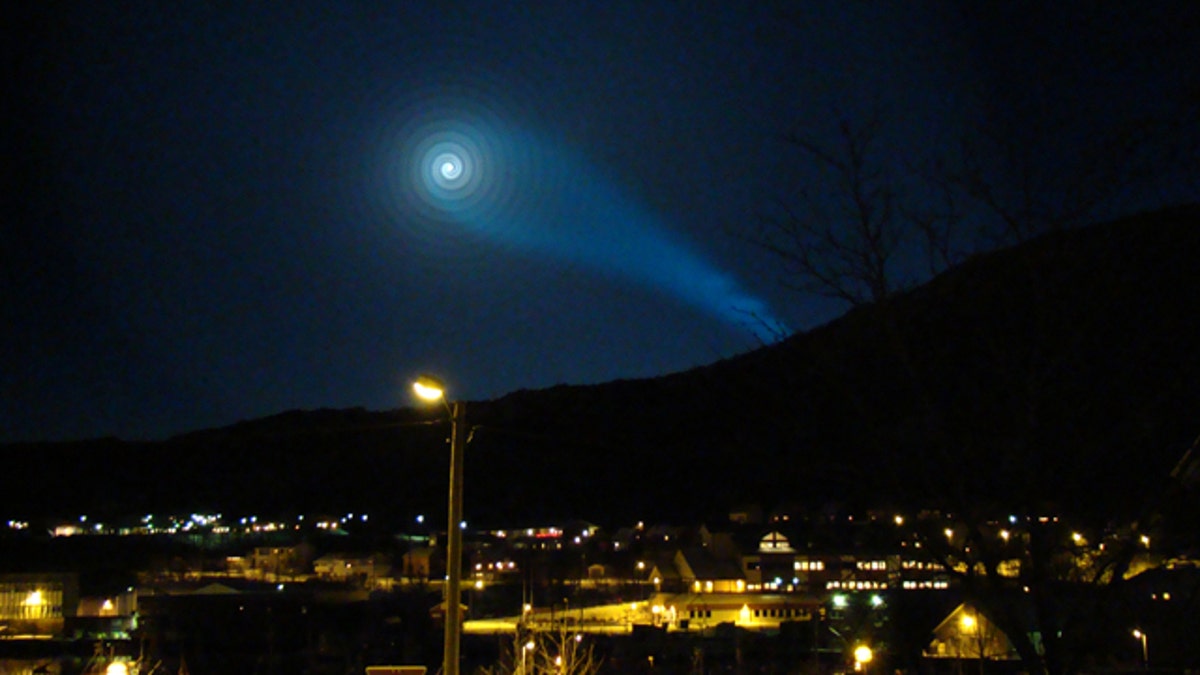
A strange light phenomenon is seen in the night sky above Skjervoy in northern Norway early Wednesday Dec. 9, 2009. According to some reports, the unexplained light may have been caused by the failure of a new Russian anti-submarine-based intercontinental missile which was being tested across the Norwegian-Russian border. (AP Photo/Anita Olsen, Scanpix, Norway)
A spectacular spiral of light was seen over the north of the country on Wednesday, prompting theories it was caused by a meteor, the Northern Lights or even aliens.
But now Russia has revealed that its latest test-firing of its new intercontinental missile ended in failure — at the same time observers witnessed the early morning light show.
As well as signaling a major setback for the country’s armed forces, the revelation provided a possible explanation for the mysterious display in the skies.
Russia's defense ministry refuses to confirme that the lights were caused by its Bulava missile, which can be equipped with up to 10 individually targeted nuclear warheads and has a maximum range of 5,000 miles.
But defense analyst Pavel Felgenhauer said the images seen over Norway were consistent with a missile failure.
"Such lights and clouds appear from time to time when a missile fails in the upper layers of the atmosphere and have been reported before," he said. "At least this failed test made some nice fireworks for the Norwegians."
The botched launch was the twelfth test of the Bulava and its eighth failure, which deals another blow to Kremlin's hopes that the sea-based weapon would become a cornerstone of its nuclear arsenal.
"They will have to spend quite a long time trying to make it working," said Alexander Konovalov, the head of the Moscow-based Institute of Strategic Assessment. "That is fraught with very negative consequences, up to the loss of the sea-based component of the Russian nuclear forces," he said.
The ministry said that a government commission was looking into the possible reasons behind the test failure.
Technology Web site Gizmodo has created a computer simulation showing how a rocket spiralling out of control could create such a display:
The Associated Press contributed to this report.
